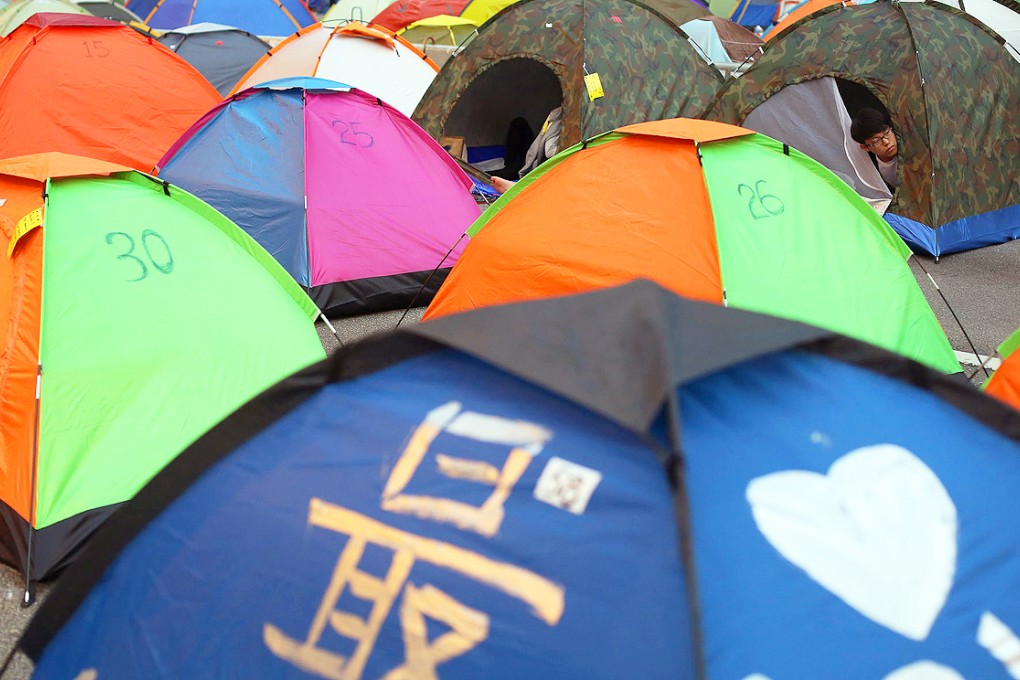Protesters build makeshift communities at Occupy sites
Protesters have built makeshift communities at scattered Occupy sites, with tent villages, a study hall for students and even a library

In the early days of the Occupy movement, elegantly dressed office ladies in Admiralty wishing to join protesters had a problem.
Unless someone was around to help, the 60cm barriers surrounding the occupied sites were a near-insurmountable obstacle for anyone wearing a tight skirt.
Not any more. In an example of the numerous ways the sites and the lives of people at them have evolved to meet needs, improvised staircases made from scrap wood now provide access at regular intervals.
The creator of the steps is retired garment-factory manager Chan Wing-fai. Chan gets up early almost every morning to salvage wood from a refuse station near his home in Lai King.
"I have never picked up trash before, nor did I think I would ever do it," the 68-year-old said in Admiralty on a recent afternoon, as he coached a group of young people on how to make chairs with discarded furniture.
"Originally I built the staircases with boxes of bottled water but they were not very durable," he said. "Then I decided to strengthen them with planks."
Across the three protest sites in Admiralty, Causeway Bay and Mong Kok, similar stories are being told in a movement that was planned as a three-day sit-in but has now passed the one-month mark.